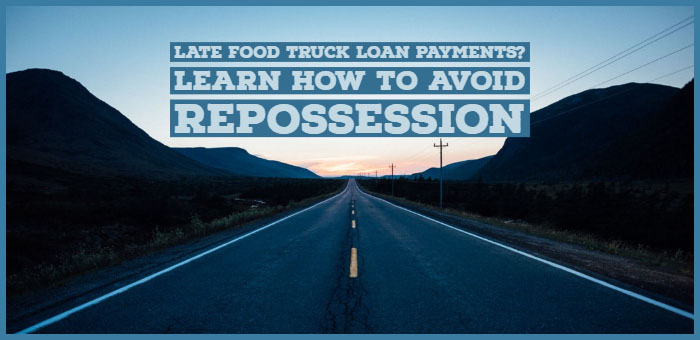The United States is a first-world country and a global economic leader. However despite of all this wealth, according to the National Alliance to End Homelessness there are more than 580,000 homeless people in the country. A reported 70 percent of those people are individuals while 30 percent are families with children. Many have jobs but are living in their vehicles due to evictions and rising cost of rent.
These people need shelter, protection, and our assistance. Often times, it’s not the individuals fault they are homeless. More often than not, an event triggered their current situation: loss of a job, health issues, or drug use. As a kind-hearted individual that wants to help this community and make the world a better place, you may want to establish a non-profit homeless shelter for them.
Page Contents
- How To Start A Homeless Shelter From Scratch
- What Type of Homeless Shelter Can You Open
- How to Raise Money to Start a Homeless Shelter
- Crowdfunding
- Raising money through donations and contributions
- Private Sponsorships
- Government Grants and Funding
- What Will You Need to Buy for a Homeless Shelter?
- How to Find a Location
- Registering As a Non-Profit Organization
- Build Time
- Final Thoughts – How to Survive in a Homeless Shelter
How To Start A Homeless Shelter From Scratch
I won’t beat around the bush. Establishing a brand-new homeless shelter is a challenging endeavor. Here’s a bird’s eye view of what you’ll need to do to accomplish this noble goal.
- Have an extensive study and comprehensive knowledge about the homeless situation in the area where you plan to serve.
- Identify your mission statement. Identify your shelter’s goals, intentions, and services.
- Plan out your funding sources, recruitment, and other business operations.
- Draft the by-laws of your organization. This is your “operating manual.”
- Pick a location. A building that is donated for your cause is best; otherwise, you’ll have to pay rent.
- The closer your shelter is to squalid areas, the more homeless people will flock to your location. Also, check out your city’s zoning ordinances; in most cases, you can’t put up a shelter just about anywhere.
- Where will you get the funds for financing your operations? From donations? Private sponsorships? Government grants? How about food, clothes, beddings, and similar stuff?
- Determine, execute, and file the legal paperwork, licenses, and processes required to legally establish your shelter.
- Appoint the directors, managers, and staff of your shelter.
- Aside from regular staff, you’ll probably need to find volunteers to help man your shelter.
- You may also need to renovate and furnish the building to ensure that your shelter is compliant to safety and security standards imposed by the government.
What Type of Homeless Shelter Can You Open
Shelters can serve everyone who is homeless whether for temporary circumstances or more long term. Here are some of the subsets of homeless people you could serve.
- veterans
- the elderly
- youth
- people of color (blacks, Hispanics, Asian, etc.)
- women and children
- victims of domestic abuse
- evicted families
Other types of shelters include:
- faith-based shelters
- transient houses
- wet shelters (for people who are intoxicated or are high on drugs)
How to Raise Money to Start a Homeless Shelter

A young woman giving money to homeless.
Homeless shelters are usually non-profit groups. You’ll need a financial stream to continue funding the work of the shelter longterm. These expenses will include the costs of supporting a property (electricity, water, sewer, real estate taxes) and pay for food and in some instances labor to support the homeless. Fortunately, you can fund a shelter’s operations in a variety of ways.
Crowdfunding
The Internet has opened new opportunities such as mail-order subscriptions and benefit events to generate funds. One of the most popular ways to raise funds is through a crowdfunding. These campaigns allow anyone with a credit or debit card to submit a donation to your project. According to Fundera, an estimated $17.2 billion is generated annually in North American alone.
Crowdfunding is usually executed by 3 entities—the person or organization that makes a proposal for a project to be funded, people or groups that support the proposal, and a platform that consolidates the first two entities in an attempt to fund an initiative.
Crowdfunding is the lowest friction way to fund a non-profit, community-oriented projects like homeless shelters. You can use popular platforms like Kickstarter, Indiegogo, and Crowd Supply to get started.
You Might Like: How to Start Your Food Truck Business Plan
Setting up a crowdfunding campaign is as easy as joining a social media network. You’ll enter information about the cause, share photos or videos that explain your mission, and of course ask for a contribution. You can even give away bonuses for people that contribute a certain amount of money. Common gifts include t-shirts, flags, social media shout outs, banners, books, or coffee mugs.
While getting a crowdfunding campaign up and running is simple, here comes the hard party… promoting your campaign. While starting a homeless shelter is an incredible goal that will change lives there will be many other equally worth campaigns bidding for attention and donations. It’s not uncommon for successful crowdfunding campaigns to become a full-time job getting the word out by marketing on social media, contacting local press, and reaching out to friends and family who might be willing to support the cause.
One tip before you setup a campaign is to make it clear what the funds will be used for. Will they be used for to cover the construction cost of a shelter? Will the money pay for food to feed the
Raising money through donations and contributions
Another classical and effective way of generating funds for your homeless shelter is through donations and contributions. Set up a booth where you can promote your idea and convince people to share a little of their good blessings for the needy.
Attracting people to your booth can be quite challenging. One way to draw your audience is to offer some form of entertainment such as a small concert or a game show. We highly recommend involving the homeless people in your entertainment to show people that they’re special and talented. Some such ideas include:
- busking
- talent showcase
- showcasing their handicrafts and arts
- selling their handicrafts and arts
- promoting simple services that homeless people can do such as shoe shining, preparing street foods, painting, etc.
Note that some of the donations may not be monetary. Some people may contribute goods such as food, clothes, socks, bedding, medicine, furniture or even time and expertice. These are all useful to get a homeless shelter started right.
Private Sponsorships
Approach businesses and offer them a proposal to sponsor a part or whole of your homeless shelter operations. All businesses want to project a positive image, and many will be interested to implement a corporate social responsibility (CSR) program.
Interested businesses can provide funding for your operations in exchange for promotions and mentions in your media. Some businesses may also offer non-monetary sponsorships such as donating food every day, running your food kitchen, providing health care, offering job applications, or training homeless people on various trades and skills.
Government Grants and Funding
You can also approach your local government for grants. Every year, the US Department of Housing and Urban Development (HUD) provides Homeless Assistance Grants to communities and institutions that offer housing and homeless-related services at the local level. Particularly, the Continuum of Care (COC) and the Emergency Solutions Grant (ESG) programs are the ones responsible for the funds.
The COC offers funds for supportive housing, transitional housing, rapid re-housing, and coordinated entry. It also conducts pilot programs such as the Youth Homelessness Demonstration Program.
On the other hand, the ESG provides funds for programs that center on rapid re-housing, emergency shelters, homeless prevention, homeless diversion, homeless prevention, and street outreach.
Finally, the US Department of Health and Human Services (HHS) also offers programs and services to individuals and families experiencing homelessness. Some of these programs and activities include:
- Runaway and Homeless Youth Programs
- Child Health Insurance Program
- Health Care for the Homeless
- Projects for Assistance in Transition from Homelessness
- Tribal Home Visiting
Here’s a complete list of HSS programs that address homelessness. The HHS offers grants for funding of these programs. Check with your local HHS to see which programs your shelter can participate in and acquire funding for such programs.
What Will You Need to Buy for a Homeless Shelter?

Volunteer collecting food for donation in a homeless shelter.
Your homeless shelter will require furnishings that make the location a safe, secure, and comfortable place for your staff, volunteers, and the homeless. Here are some suggestions.
Note that we did not include building essentials such as lighting systems, electrical systems, plumbing networks, and fire and safety alarms. But don’t forget to put thought into these components as part of your local building code. These considerations are usually suggested by the builder so you don’t need to become an expert in this area.
- Double deck beds, bunks, and cushions.
- Kitchen equipment such as stoves, ovens, serving stations, and cooking utensils.
- Tables and chairs for the dining area.
- Lockers where homeless or transients can store their things safely.
- Toiletries and bathroom supplies.
- Cleaning supplies.
- First aid kits and stations.
- Water dispensers and cups.
- Office supplies for staff.
- Cubicles, desks, filing cabinets, computer tables, and other office furniture for your staff.
- Computers and phones that allow guests to communicate with family.
As you can see there are a lot of supplies required to operate a safe and comfortable housing facility. However, if your shelter houses a certain group of individuals—-say homeless youths or drug dependents—you may have to invest in some other specialized equipment.
For example, if your organization specializes in housing mothers and children, you may need to buy diapers and playpens for kids, and breastfeeding stations for moms. An on-staff nurse that provides drug rehabilitation support and instruction is another example of specialized on-site care.
How to Find a Location
Finding a location for your newly established homeless shelter can be challenging. Sure, there are buildings and spaces for rent, and many are ideal for such a facility. However, you need to consider the following factors:
- accessibility of your facility to the homeless people, staff, volunteers, and suppliers.
- proximity to parking areas, parks, soup kitchens, and other important public places.
- the safety and security of the place for both the homeless and the people around your location.
You Might Like: 200+ Uplifting Slogans about Helping the Homeless and Poor
- your local zoning regulations. You cannot just build your shelter anywhere.
- the locality’s perception and attitude towards homeless people. There are neighborhoods that don’t like to have homeless people loitering around.
- records of crime and unlawful acts in your chosen location.
The best way to identify a location for a homeless shelter is ideal is to confer with local government. Local government or city hall might be able to offer suggestions and guidelines on establishing such a facility in the area. Working closely with government is another way to increase the odds of approval since you’ll have support of leaders.
Registering As a Non-Profit Organization
To ensure the legality of your homeless shelter, you need to register it with the IRS. Check your local government on how to file and process paperwork with your jurisdiction so you can register as a non-profit organization. The Secretary of State where you’re located usually has online forms that you can use.
You can find their website on the IRS State Nonprofit Incorporation Forms and Information web page. Once you’ve completed the form and obtained the necessary documents then submit the document to the local IRS including fees. The fee varies depending on the jurisdiction you plan to operate.
Build Time
If your homeless shelter is a refurbished building, it will probably take months to make it safe and livable. Expect a lot of inspections, renovations, and re-furnishing before going live.
If you’re constructing a shelter from scratch then expect the process to take more than a year to make the building ready for occupancy.
Final Thoughts – How to Survive in a Homeless Shelter

Once I was like you.
Sheltering the homeless is a noble endeavor. You’re truly helping to improve the lives of human beings. However, operating a homeless shelter effectively will be challenging even though your intentions are pure.
For example, you’ll most likely rely on funds, donations, and grants to run a homeless shelter’s operation. But as more homeless people find out about the shelter, you’ll quickly realize more funding. You’ll need a constant flow of revenue to replace equipment, purchase more food, and hire more people. If you can’t find funding and resources, you’ll be forced to shut down a shelter people begin to rely on.
You Might Like: Finding A Commissary Or Commercial Kitchen
You may also have to contend with sentiment from local residents. While they recognize the need such a location, individuals also have a negative perception and attitude about the homeless. While most folks will outwardly sympathize that they want to support this at-risk community, many business owners and home owners won’t want a shelter in their backyard. Local residents will cite that the presence of a shelter will attract drugs, theft, petty crime and other security issues.
There are all sorts of reasons people end up without a home. Some homeless unskilled, uneducated, impaired or mentally ill and can’t hold down employment. Others just lose a job during a bad economy and then end up losing their house or car. In fact, many homeless people used to own or rent their own homes.
Running a homeless shelter is a worthy endeavor. However, you need to be ready for the challenges that you’ll likely encounter around funding and getting approval for a location. You’ll need to navigate local politics to make this dream happen. I wish you the best of luck on this journey.




